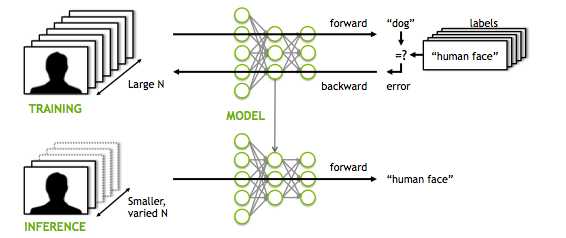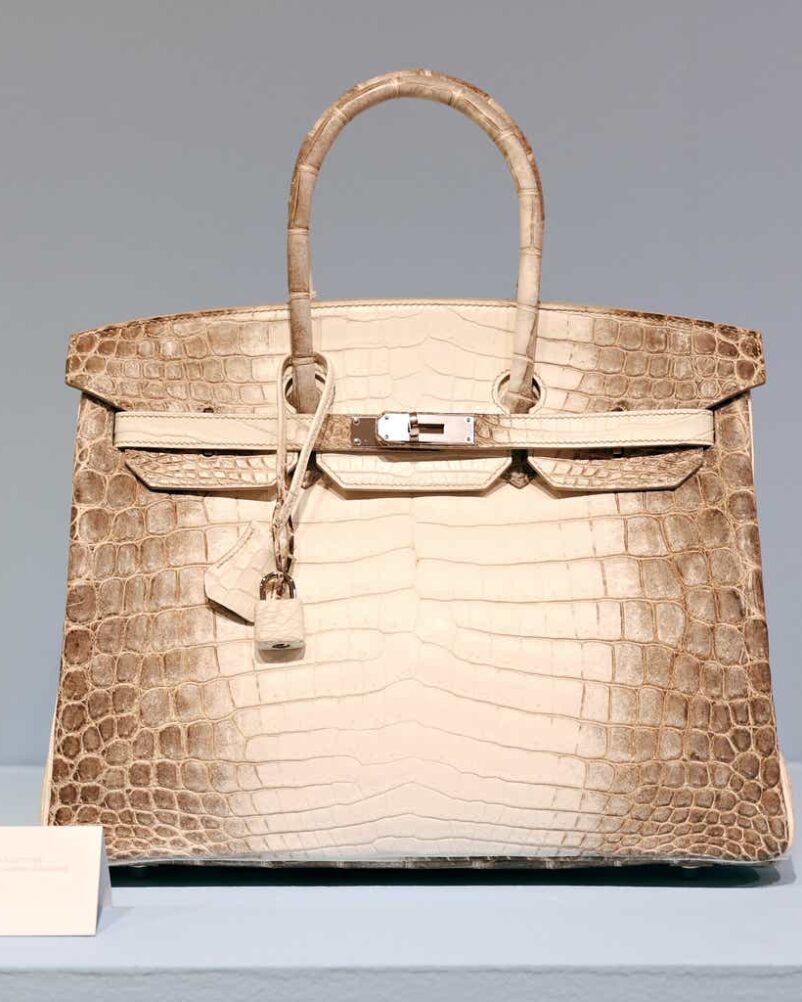
Cindy Ord/Getty Images Entertainment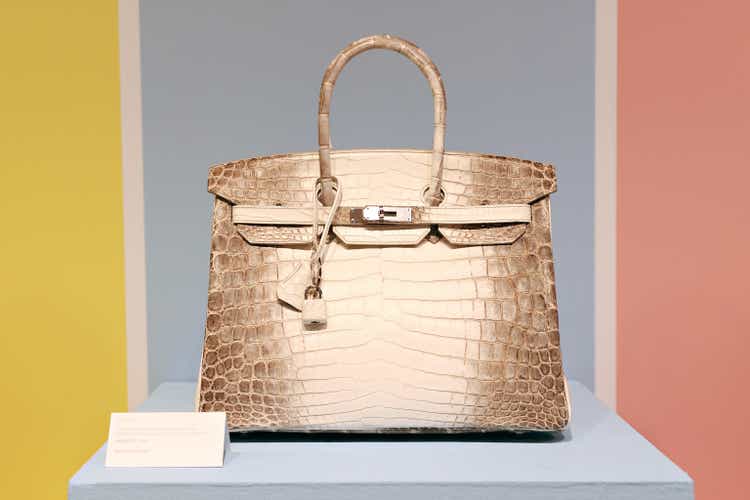
The reader may be wondering, what could Hermes (OTCPK:HESAY) possibly have to do with artificial intelligence? After all, luxury goods companies appear to be some of the least impacted by AI. Their businesses rely heavily on brick-and-mortar stores and incorporate little to no software aside from the occasional website.
In Hermes’ case, AI plays even less of a direct role on day-to-day operations as the company does not automate its manufacturing process with machines. In fact, Hermes is known for employing highly-trained artisans who handcraft its products, ensuring high quality. Despite all this, there are several compelling reasons suggest Hermes could be one of the biggest winners in the AI era.
Hermes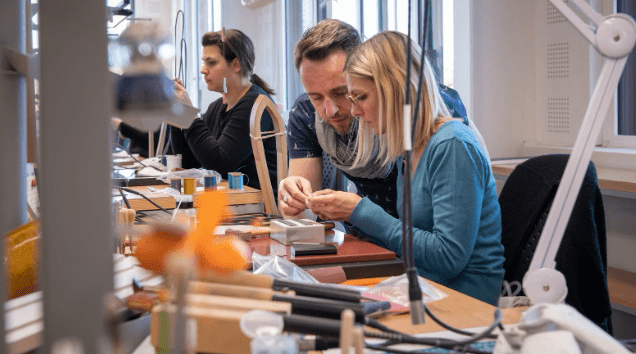
AI Primer
In order to fully understand the Hermes AI thesis, it is important to first understand the general impact that AI will have on society moving forward. The rise of generative AI tools like ChatGPT and Gemini are already starting to displace white collar jobs. These tools’ ability to reason at a rudimentary level, while also having access to entire swaths of human knowledge, has allowed them to perform a wide range of tasks surprisingly well.
Generative AI tools have already been shown to be so competent that they have been able to pass notoriously difficult bar exams, medical exams, and even Google code interviews. However, what is most frightening is the pace at which these AI tools have been improving.
This Time is Different
Many are still clinging on to the hope that this current AI technological revolution will create at least as many new jobs as it destroys. After all, previous industrial or technological revolutions have all appeared to follow this pattern. Unfortunately for the optimists, it is clear that this time is actually different.
In the case of AI, the technology represents generalized intelligence itself. This means that AI has the potential to disrupt virtually every single industry given its generalized nature. This contrasts sharply to the previous industrial revolutions where the impact of new technologies was limited to a small number industries for the most part.
What’s more, the speed at which AI is improving is unlike any previous technological revolution, allowing individuals less time to adapt. Something that an AI can’t do today could become completely trivial to an AI a few years down the road. In fact, we are already witnessing this rapid expansion of capabilities every year with new releases of generative AI models. The generalized and exponential growth of AI will likely result in two megatrends that will favor Hermes.
Growing Wealth Disparity
First, wealth inequality will likely accelerate as knowledge workers are displaced or forced to take on lower paid blue-collar jobs. However, those who benefit directly or indirectly from AI will reap disproportionate rewards from AI-related productivity gains, i.e., company executives, machine learning programmers, capital owners, investors, etc. There have been several studies that link the rise of AI and automation to a global rise in wealth inequality. For instance, despite workforce productivity increasing dramatically over the past few decades as a result of technological gains, these productivity gains have not benefited the majority of workers.
A recent study showcases the relatively high correlation of income inequality and demand for luxury goods. In fact, the higher-end luxury brands scored even higher correlation scores compared to lower-end luxury brands, with brands like Chanel and David Yurman scoring correlation scores of .68 and .74, respectively. Another study showcases that the status anxiety that comes from income inequality further drives demand for luxury goods. Therefore, wealth inequality drives luxury demand both as a result of more wealth accumulating at the top and the status anxiety that comes from inequality.
The uncomfortable truth is that Hermes benefits a great deal from wealth inequality as the premier luxury goods brand. Individuals in the upper income brackets will only grow richer, meaning they will have more disposable income to buy Hermes’ products. The upward transfer of wealth that is likely to occur with the acceleration of AI puts Hermes in a great position. Simply put, the rich getting richer is great business for Hermes.
Decreasing Scarcity
Second, the cost of goods, services, and technologies will likely fall at a rapid rate as a result of the productivity gains made from AI. The most obvious implication is that consumers will have more disposable income to spend on luxury or nonessential goods. Hermes, in particular, is well-positioned even among other luxury brands to capitalize on this trend.
Whereas most goods will become cheaper, Hermes’ products will likely continue to appreciate in value given how carefully the company has been to create artificial scarcity for its premier products. What’s more, the company’s products will not be at risk of technological obsolescence as one of their main appeals is that they are hand-crafted in limited numbers.
Hermes’s business model of producing limited numbers of products and making it difficult and expensive to obtain said products has created a mystique of its products that cannot be impacted by technological revolutions. No matter how good AI becomes, the demand for Hermes’ hand-crafted and limited goods will likely remain robust.
Ingenious business model
Hermes makes it incredibly hard to buy its premier products like Birkin bags or Kelly bags. Not only are these products expensive but stores only allow certain individuals to buy these products. Gaining access to these highly-sought after goods can usually only be accomplished by spending large sums of money purchasing Hermes lower-end goods, maintaining a good relationship with the store, or oftentimes a combination of both.
However, all this is still technically speculation, as Hermes never reveals the process of who they choose to sell their premier products to. This process has been coined the “Hermes Game” and is a large contributing factor as to why Hermes’ premier products are so sought after. After all, even money may not be enough to outright purchase a Birkin or Kelly bag from a Hermes store.
This business model of artificial scarcity and exclusivity is ingenious from a luxury brand perspective. This has made Hermes’ premier products so sought after that they have appreciated considerably in value over the years. In fact, they are increasingly seen as a highly desirable asset class as they have even outperformed traditional asset classes like stocks.
A study by Baghunter found that the Birkin’s value increased ~14.2% annually between 1980 and 2015, far surpassing the S&P 500 returns of ~9% during the same time period. This makes Hermes premier products incredibly unique, as premier products from most other luxury brands either stay flat or decline in value after purchase. In fact, there are even cases of individuals purchasing Birkin Bags purely as an investment asset.
Gaining access to premier products like Birkin bags is incredibly hard. It can usually only be accomplished by spending at least tens of thousands of dollars buying in-store goods and maintaining a good relationship with the store.
Inside a NY Hermes Store (Hermes)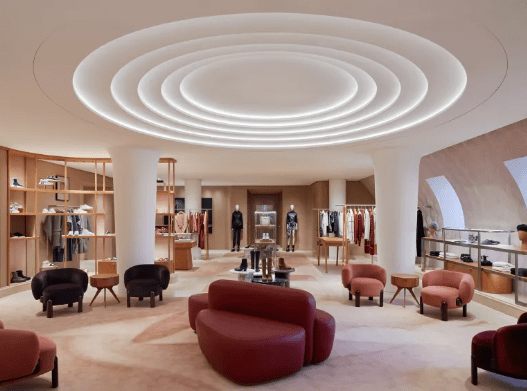
The Virtuous Cycle of Hermes’ Products
The knowledge that Hermes’ premier products also make for great investments will likely increase demand moving forward. This growing demand should push Hermes’ prices even higher, further reinforcing the idea that the company’s premier products make for great investments. This, in turn, further increased demand, thus creating a positive reinforcing feedback loop.
The additional demand component will only motivate Hermes’ shoppers to spend even more money buying lower-end Hermes’ products in hopes that they will be invited to purchase one of the company’s premier products. There are already accounts of individuals spending multiple tens of thousands of dollars on Hermes’ store products without receiving an invite to purchase a Birkin or Kelly bag.
The ability to have products that are seen as not only high-end luxury goods, but also incredibly lucrative investment puts Hermes at a great advantage compared to competitors like LVMH (OTCPK:LVMUY). Very few, if any, other brands can boast that their products actually increase in value over time. While there are certain products from other brands that have been appreciated over time, none can compare to the value appreciation experienced by Hermes’ products.
Increasingly Strong Moat
Network effects are often talked about in the context of technology companies like Meta (META) with its social media platforms or Amazon (AMZN) with its Prime ecosystem. However, it can be argued that Hermes has a stronger network effect than even these large technology companies.
In essence, a network effect occurs when a product’s value depends on the number of users, buyers, and sellers. In Hermes’ case, the strength of its network effect not only comes from buyers, but also extends to individuals who are just aware of the brand. After all, much of Hermes’ products’ appeal comes from the fact that users of the brand will be able to show off to those who are aware of the brand.
This network effect creates a moat that is incredibly difficult to penetrate. Now that Hermes has established itself as the premier high-end luxury brand after decades of quality craftsmanship and smart marketing, it will be incredibly hard for competitors take meaningful market share from Hermes. What’s more, the dynamics of the high-end luxury market make Hermes’ moat even stronger due to the Veblen effect.
In essence, the Veblen effect occurs when demand for a product increase as the price of the product increases due to the product’s increasingly exclusive nature. This means that even if a competitor were to create products of similar quality but at a lower price, they would likely have an incredibly hard time gaining traction. After all, the high-prices and brand associated Hermes is precisely why individuals buy their items in the first place.
Hermes has the benefit of the network effect and Veblen effect feeding off each other. Hermes’ high brand awareness allows the company to sell products at an incredibly high price. As a result of the exclusivity and status that come with owning such expensive products, awareness and subsequent demand of Hermes’ products grows. As demand and awareness grows, Hermes can further increase prices to further cement its position as the premier high-end luxury goods company, feeding into the positive reinforcement loop mentioned in the previous section.
Strong Financials
Hermes is an incredibly healthy business from a financial standpoint. In Q3, the company reported operating profit margins greater than 40% at a sales figure of €3,365 million, presenting a YoY increase of 16%. The company’s growing demand continues to be driven by markets such as Asia (excluding Japan), Japan, America, and Europe (excluding France), and France, which grew 21%, 25%, 20%, 20%, and 22% respectively.
Hermes’ increasingly strong balance sheet should allow the company to weather any potential economic or demand downturns in the future. The company is currently so profitable that even severe downturns would likely not have a lasting negative impact on the company. What’s more, the ultra-rich clientele of Hermes are generally less impacted by economic downturns. The same could not be said about competitors like LVMH who cater to a relatively lower-end luxury market.
Risks Remain
While Hermes is very well-positioned in the high-end luxury market, the company could lose market share to well-financed competitors like LVMH. LVMH, in particular, has the finances and brand-recognition to seriously compete in the high-end luxury market. In fact, many of their brands like Chanel continue to make notable inroads in many markets that Hermes is operating in.
Hermes also faces a long-term risk of declining demand in luxury goods as a result of changes in societal attitude. If society were to trend away from luxury goods, Hermes could see its demand plummet. However, this risk remains small as the wealthy will likely always want to find ways to signal their wealth.
Conclusion
While Hermes may seem like a strange AI play at first glance, the company is well-positioned to ride the AI wave. As money pours into the obvious AI plays like Microsoft (MSFT) or Alphabet (GOOGL), Hermes remains hidden in plain sight as a high-potential AI play. While the company is not directly involved in AI, it is set to benefit from the megatrends that AI is creating. Even at Hermes’ valuation of $208B and relatively high PE ratio of 47, the company still has more upside.
Editor’s Note: This article discusses one or more securities that do not trade on a major U.S. exchange. Please be aware of the risks associated with these stocks.


